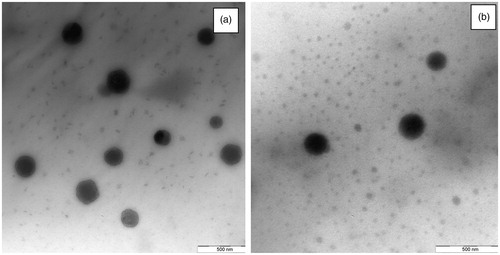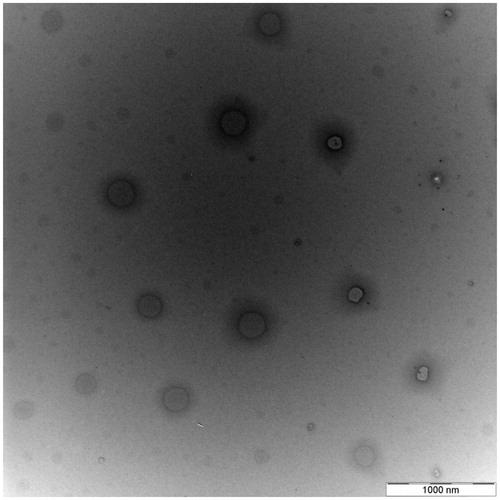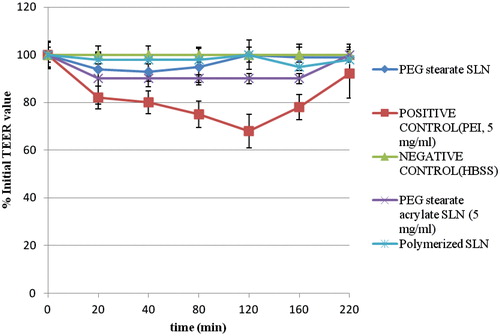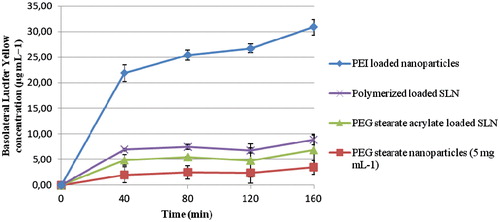Figures & data
Table 1. Composition of SLNs based on PEG-40 stearate and PEG-40 stearate acrylate.
Table 2. Mean particle size, PI index and EE (%) of SLNs. Overall *p50.05 (data are expressed as mean ± standard error of mean of six individual samples per group).
Figure 3. Profiles of clotrimazole release from SLNs PEG-40 stearate and PEG-40 stearate acrylate nanoparticles at three different pH (2.7, 4.6 and 6.5), simulating the conditions of infection with Candida albicans in the vagina, and at different time intervals (1, 2, 4, 6 and 12 h) in a shaking bath at 37 °C. Results indicate mean of three independent experiments done in triplicate.

Figure 4. Profiles of ketoconazole release from SLNs PEG-40 stearate and PEG-40 stearate acrylate nanoparticles at three different pH (2.7, 4.6 and 6.5), simulating the conditions of infection with Candida albicans in the vagina, and at different time intervals (1, 2, 4, 6 and 12 h) in a shaking bath at 37 °C. Results indicate mean of three independent experiments done in triplicate.
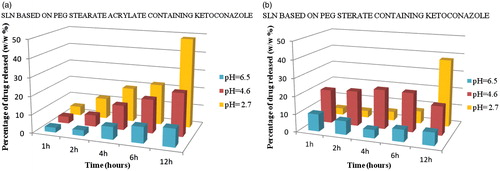
Figure 5. Polymerized SLNs profiles of clotrimazole and ketoconazole release at three different pH (2.7, 4.6 and 6.5), simulating the conditions of infection with Candida albicans in the vagina, and at different time intervals (1, 2, 4, 6 and 12 h) in a shaking bath at 37 °C. Results indicate mean of three independent experiments done in triplicate.


